Related Research Articles

Whaling is the process of hunting of whales for their usable products such as meat and blubber, which can be turned into a type of oil that became increasingly important in the Industrial Revolution. It was practised as an organized industry as early as 875 AD. By the 16th century, it had risen to be the principal industry in the Basque coastal regions of Spain and France. The industry spread throughout the world, and became increasingly profitable in terms of trade and resources. Some regions of the world's oceans, along the animals' migration routes, had a particularly dense whale population, and became the targets for large concentrations of whaling ships, and the industry continued to grow well into the 20th century. The depletion of some whale species to near extinction led to the banning of whaling in many countries by 1969, and to an international cessation of whaling as an industry in the late 1980s.
The International Whaling Commission (IWC) is a specialised regional fishery management organisation, established under the terms of the 1946 International Convention for the Regulation of Whaling (ICRW) to "provide for the proper conservation of whale stocks and thus make possible the orderly development of the whaling industry".

Whale watching is the practice of observing whales and dolphins (cetaceans) in their natural habitat. Whale watching is mostly a recreational activity, but it can also serve scientific and/or educational purposes. A study prepared for International Fund for Animal Welfare in 2009 estimated that 13 million people went whale watching globally in 2008. Whale watching generates $2.1 billion per annum in tourism revenue worldwide, employing around 13,000 workers. The size and rapid growth of the industry has led to complex and continuing debates with the whaling industry about the best use of whales as a natural resource.

The southern right whale is a baleen whale, one of three species classified as right whales belonging to the genus Eubalaena. Southern right whales inhabit oceans south of the Equator, between the latitudes of 20° and 60° south. In 2009 the global population was estimated to be approximately 13,600.
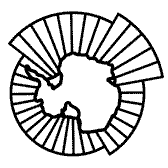
The Convention on the Conservation of Antarctic Marine Living Resources, also known as the Commission for the Conservation of Antarctic Marine Living Resources, and CCAMLR, is part of the Antarctic Treaty System.
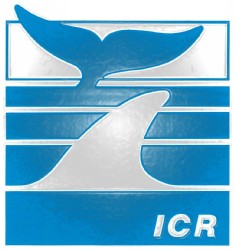
The Institute of Cetacean Research: is a Japanese entity that claims to be a research organization specializing in the "biological and social sciences related to whales".
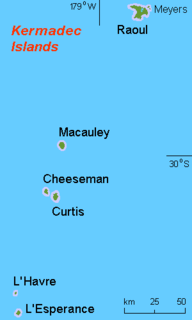
The Kermadec Islands are a subtropical island arc in the South Pacific Ocean 800–1,000 km (500–620 mi) northeast of New Zealand's North Island, and a similar distance southwest of Tonga. The islands are part of New Zealand, 33.6 km2 (13.0 sq mi) in total area and uninhabited, except for the permanently manned Raoul Island Station, the northernmost outpost of New Zealand.

Japanese whaling, in terms of active hunting of whales, is estimated by the Japan Whaling Association to have begun around the 12th century. However, Japanese whaling on an industrial scale began around the 1890s when Japan started to participate in the modern whaling industry, at that time an industry in which many countries participated. Modern Japanese whaling activities have extended far outside Japanese territorial waters, including whale sanctuaries protected by other countries.
The Australian Marine Conservation Society (AMCS) is an Australian environmental not-for-profit organisation. It was founded in 1965 as the Queensland Littoral Society before changing its name to the Australian Littoral Society and then finally in 1995 to its current title. It works on protecting the health and vitality of Australia's coasts and oceans.

The Nisshin Maru (日新丸) is the primary vessel of the Japanese whaling fleet and is the world's only whaler factory ship. It was the research base ship for the Institute of Cetacean Research for 2002 to 2007. It has a tonnage of 8,145 GT and is the largest member and flagship of the five-ship whaling fleet, headed by leader Shigetoshi Nishiwaki. The ship is based in Japan in Shimonoseki harbor and is owned by Tokyo-based Kyodo Senpaku, which is a subsidiary of the Institute of Cetacean Research.
The Southern Ocean Whale Sanctuary is an area of 50 million square kilometres surrounding the continent of Antarctica where the International Whaling Commission (IWC) has banned all types of commercial whaling. To date, the IWC has designated two such sanctuaries, the other being the Indian Ocean Whale Sanctuary.
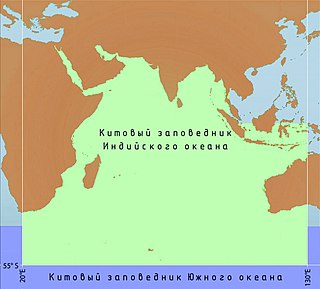
The Indian Ocean Whale Sanctuary is an area in the Indian Ocean where the International Whaling Commission (IWC) has banned all types of commercial whaling. The IWC has at present designated two such sanctuaries, the other being the Southern Ocean Whale Sanctuary. Repeated proposals at the IWC for a South Atlantic Sanctuary and a South Pacific Sanctuary have never reached the 75% majority needed to pass.
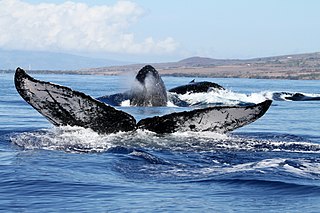
The Hawaiian Islands Humpback Whale National Marine Sanctuary is one of the world's most important whale habitats, hosting thousands of humpbacks each winter.

Commercial whaling in New Zealand waters began late in the 18th century and continued until 1965. It was a major economic activity for Europeans in New Zealand in the first four decades of the 19th century. Nineteenth-century whaling was based on hunting the southern right whale and the sperm whale and 20th-century whaling concentrated on the humpback whale.

The Sea Shepherd Conservation Society engages in various demonstrations, campaigns, and tactical operations at sea and elsewhere, including conventional protests and direct actions to protect marine wildlife. Sea Shepherd operations have included interdiction against commercial fishing, shark poaching and finning, seal hunting and whaling. Many of their activities have been called piracy or terrorism by their targets and by the ICRW. Sea Shepherd says that they have taken more than 4,000 volunteers on operations over a period of 30 years.

Whale conservation refers to the conservation of whales.

Anti-whaling refers to actions taken by those who seek to end whaling in various forms, whether locally or globally in the pursuit of marine conservation. Such activism is often a response to specific conflicts with pro-whaling countries and organizations that practice commercial whaling and/or research whaling, as well as with indigenous groups engaged in subsistence whaling. Some anti-whaling factions have received criticism and legal action for extreme methods including violent direct action. The term anti-whaling may also be used to describe beliefs and activities related to these actions.

The Memorandum of Understanding (MoU) for the Conservation of Cetaceans and their Habitats in the Pacific Island Region is a Multilateral Environmental Memorandum of Understanding concluded under the auspices of the Convention on Migratory Species of Wild Animals (CMS), also known as the Bonn Convention, and in collaboration with the Pacific Regional Environment Programme (SPREP). The MoU provides an international framework for coordinated conservation efforts to improve the conservation status of the Pacific Islands Cetaceans and came into effect on 15 September 2006.

The Marine Policy of the Barack Obama administration comprises several significant environmental policy decisions for the oceans made during his two terms in office from 2009 to 2017. By executive action, President Obama increased fourfold the amount of protected marine space in waters under United States control, setting an important precedent for global ocean conservation. Using the U.S. president's authority under the Antiquities Act of 1906, he expanded to 200 nautical miles the seaward limits of Papahānaumokuākea Marine National Monument in Hawaiʻi and the Pacific Remote Islands Marine National Monument around the U.S. island possessions in the Central Pacific. In the Atlantic, President Obama created the Northeast Canyons and Seamounts Marine National Monument, the first marine monument in the U.S. exclusive economic zone (EEZ) in the Atlantic.
References
- ↑ Affairs, New Zealand Ministry of Foreign (2016-10-28). "Protecting whales". New Zealand Ministry of Foreign Affairs and Trade. Retrieved 2019-09-02.
- ↑ "Report of the 52nd Meeting". IWC Archive. 2000. Retrieved 2019-09-02.
- ↑ "Whale sanctuary rejected". BBC News. 2000-07-04. Retrieved 2019-09-02.